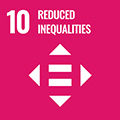- Docente: Alessandra Anselmi
- Credits: 6
- SSD: L-ART/02
- Language: Italian
- Teaching Mode: Blended Learning
- Campus: Bologna
- Corso: First cycle degree programme (L) in Anthropology, Religions, Oriental Civilizations (cod. 8493)
Learning outcomes
By the end of the course students will possess a specific knowledge of the most important historiographic problems linked to History of Modern and Contemporary Art and he will have critical tools to understand relationships between art, environment, history and sustainability of forms and practices of associated life.
Course contents
Examination and discussion of the periodization and definitions (Renaissance, Mannerism, Baroque, Neoclassicism, Eclecticism, Art Deco, Modern Movement, International Style, Postmodernism) utilized by historiography in the field of History of Modern and Contemporary Art. The course will analyze some of the most representative works form each period in terms of their style, significance and context.
After clarifying the principal questions and lines of research in art during the centuries in question, specific attention will be focused on modern and contemporary architecture. In particular, the course will look at Art Deco, the Modern Movement, the International Style and Postmodernism, together with building abuse, non-places and themes of exclusion, alienation and environmental stress.
Course objectives include the promotion of a reflection on the importance of art in relation to the possibilities for sustainable human development. Similarly, the course will seek to favor the development of a critical awareness of the space that surrounds us, which we occupy on a daily basis, and thus of the historical city. Lessons will also look at the countless monster buildings produced by real estate speculation and poor political administration, which proliferated during the post-war era. Some represent true examples of “junkspace” and “fuck the context”, to use the famous expressions coined by Rem Koolhaas to describe phenomena toward which we cannot remain indifferent. This program is reserved exclusively for students who attend lessons because notes taken in the classroom and educational material provided case-by-case by the professor will constitute, beyond the bibliography provided below, a fundamental part of the course that will be evaluated during the final exam. Students who do not plan to attend lessons should refer to the dedicated bibliography below.
Readings/Bibliography
Bibliography for students who attend lessons
S. Settis, Architettura e democrazia. Paesaggio, città, diritti civili, Torino, Giulio Einaudi editore, 2017.
M. Augé, Nonluoghi. Introduzione a una antropologia della surmodernità, Elèuthera, 2009 (ed. or. Non-lieux, 1992, Editions du Seuil).
M. Mengozzo, Il capitale ignorante. Ovvero come l’ignoranza sta cambiando l’arte, Azzate (Va), Johan and Levi Editore, 2019.
Bibliography for students who do not attend the course
S. Settis, Architettura e democrazia. Paesaggio, città, diritti civili, Torino, Giulio Einaudi editore, 2017.
G. C. Argan, Walter Gropius e la Bauhaus, Torino, Giulio Einaudi editore, 1988 or following editions (I ed. Torino, Giulio Einaudi editore, 1951) or, artenatively, L. Sklair, The Icon Project: Architecture, Cities and Capitalist Globalization, Oxford, Oxford University Press, 2017.
M. Mengozzo, Il capitale ignorante. Ovvero come l’ignoranza sta cambiando l’arte, Azzate (Va), Johan and Levi Editore, 2019.
and, of your choiche, one of the following books:
R. Koolhaas, Junkspace, Macerata, Quodlibet, 2006
or
G. Clément, Manifesto del Terzo paesaggio, Macerata, Quodlibet, 2016 (II ed.; ed. or. Manifeste du Tiers Paysage, Parigi, Sujet/Objet, 2004)
or
M. Augé, Nonluoghi. Introduzione a una antropologia della surmodernità, Elèuthera, 2009 (ed. or. Non-lieux, 1992, Editions du Seuil)
or
A. Cegna, Cosa succede in città? Lo spazio urbano e l’interesse economico, Novate Milanese (Mi), Prospero Editore, 2021.
Teaching methods
Lessons with projections and analyses of images.
Assessment methods
EXAMS WILL BE ONLY IN ITALIAN.
Students who follow the course can choose, only for the first two exam sessions, between a written proof (24 questions at multiple choice and three open questions) or an oral proof. Since third exam session, the proof will be only oral. Students who do not follow the course have to pass an oral examination.
Grades are assigned in relation to a total of thirty points, with a laude for outstanding performance. The minimum passing grade is 18/30. Examinations will serve to verify the student’s level of preparation and critical skills in relation to the classroom lessons and assigned readings.
Teaching tools
projector
Office hours
See the website of Alessandra Anselmi
SDGs




This teaching activity contributes to the achievement of the Sustainable Development Goals of the UN 2030 Agenda.
